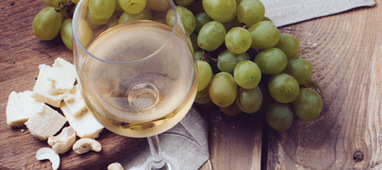A - Wine Glossary
Acidity: The sour or tart taste in wine and other food. The primary natural acid in grapes and wine is Tartaric acid; the second most abundant is Malic acid. Sometimes referred to as the "backbone" of a wine, acidity contributes to a wine's aging ability. The sour taste of acidity in wine is often pleasantly counterbalanced by sweetness (from sugar or alcohol).
Aftertaste: The "shadow taste" remaining in your mouth just after swallowing a sip of wine. Important in wine tasting because it can reveal an extra attribute or fault. In general terms the longer the taste lingers the better the wine.
Aging: Term describing the storing of wine under certain specific conditions for the purpose of improving the wine. Aging of wines (usually reds) for long periods in oak barrels adds oak-flavour and makes the wine more complex. After bottling, further aging in sealed bottles develops a pleasing taste and odour characteristic.
Alcohol: Many different compounds in nature are classed as "alcohols" chemically. In wine only one exists in significant amounts - ethanol. Other alcohols, if present, occur only in minute amounts and are usually thought of as flavour components. Alcohol adds a sweetish taste to wines, or hotness if present in too high a concentration. Conversely, if its alcohol content is too low, a wine may be thin, unbalanced and lacking in body.
Aligoté: A white wine grape used in various blends in many countries but best known for its fruity, light wines from Burgundy in France.
Amontillado: A type of Spanish sherry, medium in colour and sweetness between Fino (light and dry) and Olorosso (heavier and sweet). Amontillados are known for a distinctively nutty flavour not possessed by the other Sherry types.
Appellation Contrólée (AC/AOC): French wine laws that dictate which varieties can be planted in specific regions, certain production methods, etc. These tight controls are not a guarantee of quality, unfortunately.
Appellation: A term used to describe the vineyard location where the grapes were grown for a specific wine. It can refer to a broad region, such as Napa Valley in California or Bordeaux in France. Or, it can refer to a more tightly defined sub-region like Oak Knoll within Napa Valley or Médoc within Bordeaux. Wine snobs often proclaim that wines grown within certain highly regarded appellations have a higher quality than similar wines grown elsewhere. Experienced tasters know that this is not necessarily true.
All grapes, as all wines, grown within any certain appellation are not necessarily superb; neither are they necessarily plonk. Nevertheless, wines from certain appellations usually sell at higher prices than do similar wines from "lesser" appellations, regardless of how others might rank them.
Via
Haralabos Papatheodorou | English to Greek Medical Translator,
Estelblau






 Your new post is loading...
Your new post is loading...






























